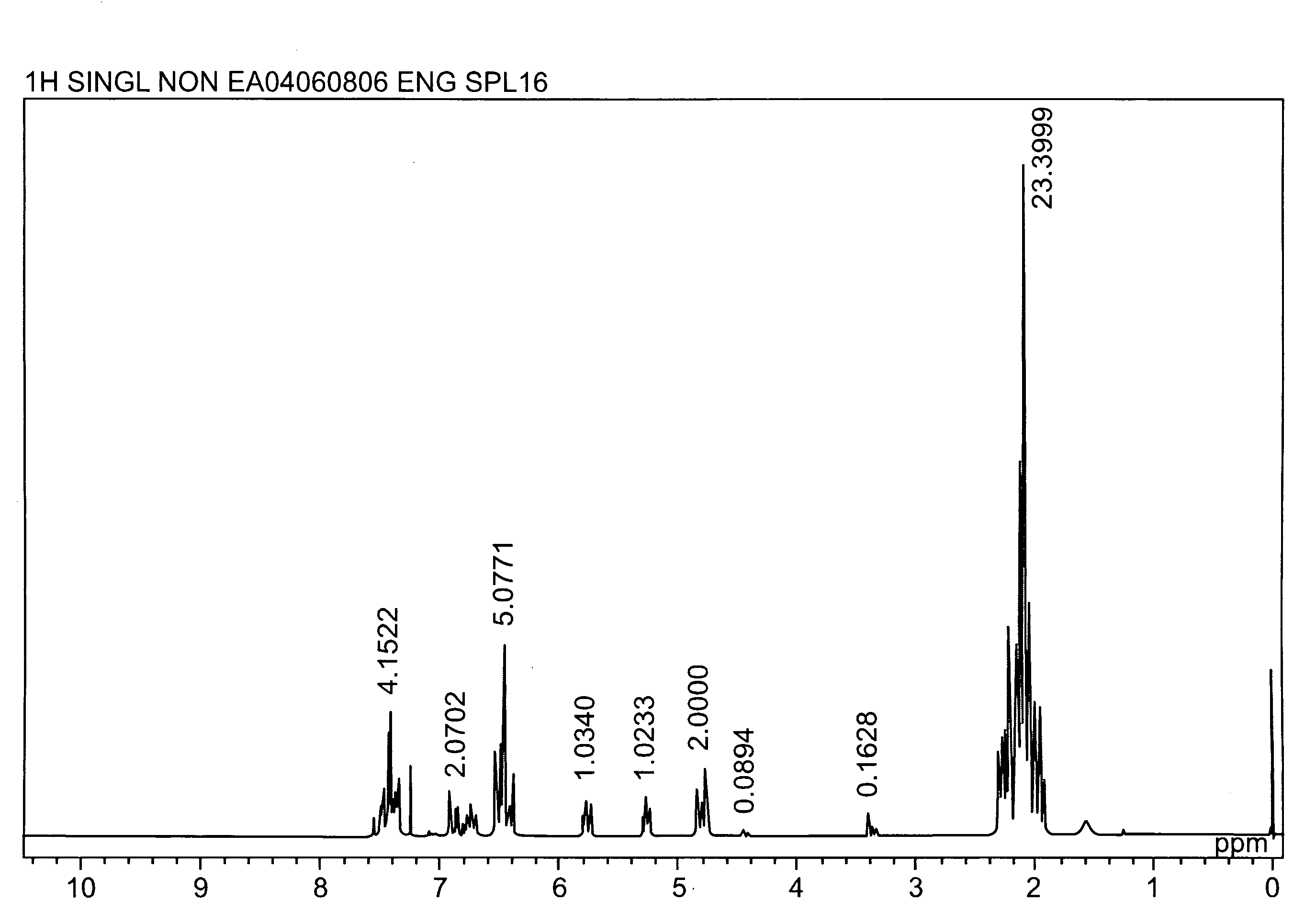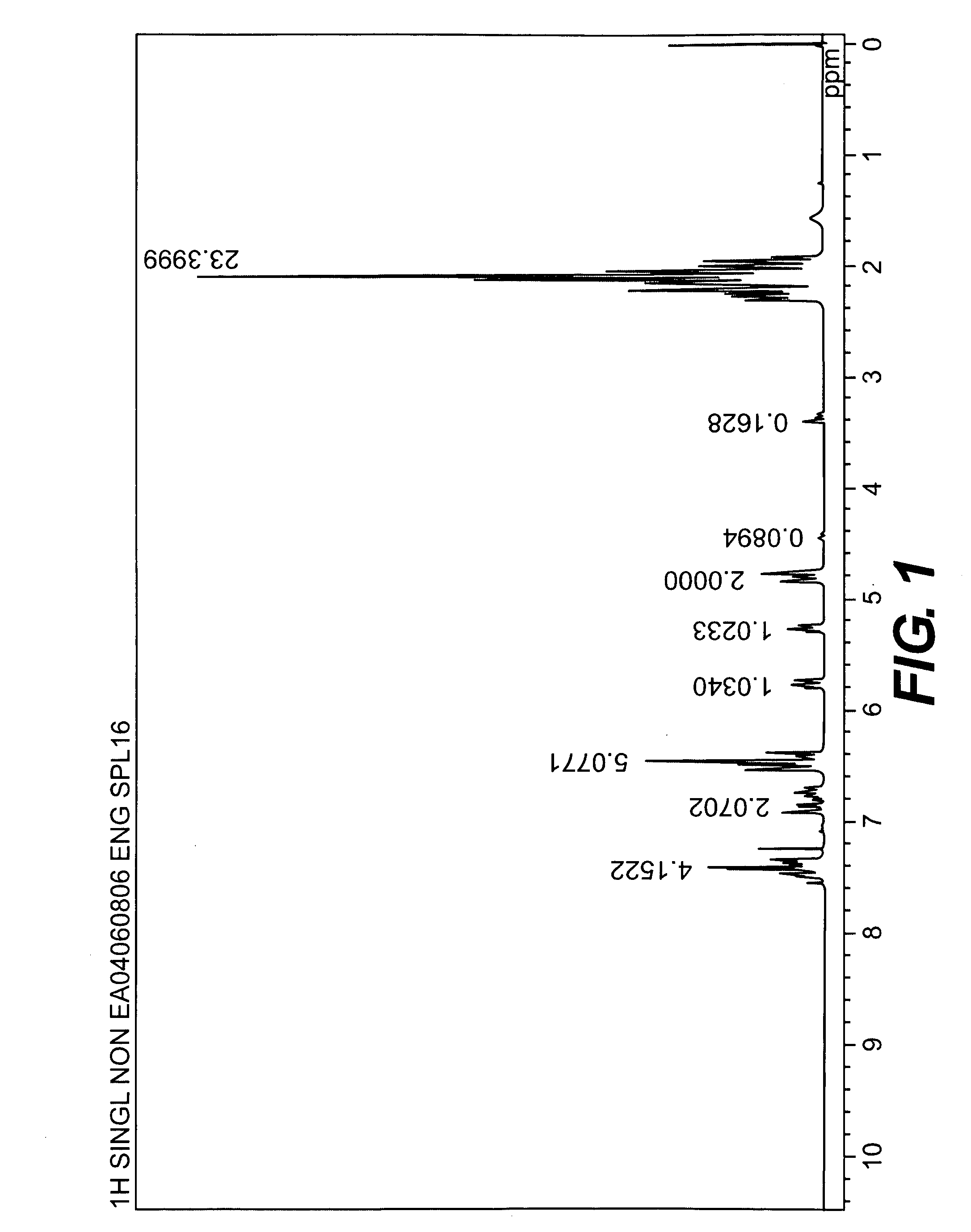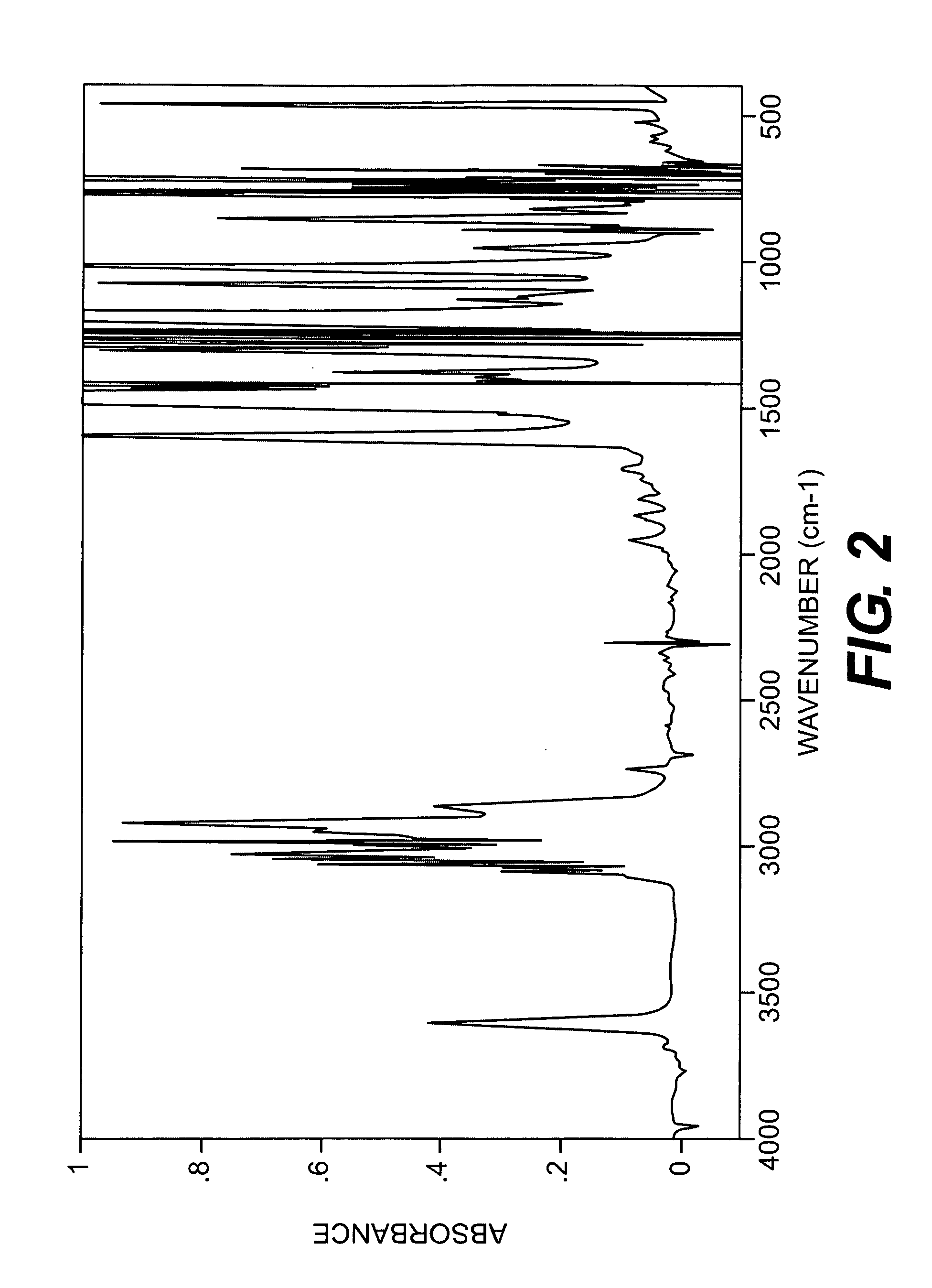Process for the production of vinyl compound
- Summary
- Abstract
- Description
- Claims
- Application Information
AI Technical Summary
Benefits of technology
Problems solved by technology
Method used
Image
Examples
referential example 1
[0044]A longitudinally long reactor having a volume of 400 liters and equipped with a stirrer, a thermometer, an air-introducing tube and baffleplates was charged with 28.38 g (0.127 mol) of CuBr2, 21.89 g (0.127 mol) of N,N′-di-t-butylethylenediamine, 738.86 g (7.30 mol) of n-butyldimethylamine, 70.50 kg of toluene and 2.98 kg of methanol. The mixture was stirred at a reaction temperature of 42° C. Separately, 1,436 g (5.31 mol) of 2,2′,3,3′,5,5′-hexamethyl-(1,1′-biphenyl)-4,4′-diol (to be referred to as HMBP hereinafter), 9,740 g (79.72 mol) of 2,6-dimethylphenol, 47.43 g (0.212 mmol) of CuBr2, 36.59 g (0.212 mmol) of N,N′-di-t-butylethylenediamine and 195.89 g (1.94 mol) of n-butyldimethylamine were dissolved in a mixed solvent containing 18.7 kg of toluene and 24.6 kg of methanol, to obtain a mixed solution. The mixed solution was dropwise added to the mixture in the reactor over 239 minutes with stirring while bubbling was carried out with a nitrogen-air mixed gas having an oxy...
referential example 2
[0045]A longitudinally long reactor having a volume of 400 liters and equipped with a stirrer, a thermometer, an air-introducing tube and baffleplates was charged with 27.96 g (0.125 mol) of CuBr2, 32.36 g (0.188 mol) of N,N′-di-t-butylethylenediamine, 344.58 g (3.41 mol) of n-butyldimethylamine, 46.10 kg of toluene and 23.28 kg of methanol. The mixture was stirred at a reaction temperature of 42° C. Separately, 3,592 g (13.28 mol) of HMBP, 8,150 g (66.71 mol) of 2,6-dimethylphenol, 36.45 g (0.163 mmol) of CuBr2, 41.80 g (0.243 mmol) of N,N′-di-t-butylethylenediamine and 445.81 g (4.41 mol) of n-butyldimethylamine were dissolved in a mixed solvent containing 30.2 kg of toluene and 15.35 kg of methanol, to obtain a mixed solution. The mixed solution was dropwise added to the mixture in the reactor over 241 minutes with stirring while bubbling was carried out with a nitrogen-air mixed gas having an oxygen concentration of 8% at a flow velocity of 139 L / min. After the completion of the...
referential example 3
[0046]A longitudinally long reactor having a volume of 12 liters and equipped with a stirrer, a thermometer, an air-introducing tube and baffleplates was charged with 1.04 g (4.66 mmol) of CuBr2, 1.20 g (6.98 mmol) of N,N′-di-t-butylethylenediamine, 12.74 g (125.9 mmol) of n-butyldimethylamine, 1,700 g of toluene and 830 g of methanol. The mixture was stirred at a reaction temperature of 40° C. Separately, 109.6 g (0.385 mol) of 4,4′-(1-methylethylidene)bis(2,6-dimethylphenol), 235.5 g (1.93 mol) of 2,6-dimethylphenol, 1.30 g (5.83 mmol) of CuBr2, 1.51 g (8.78 mmol) of N,N′-di-t-butylethylenediamine and 16.03 g (158.4 mmol) of n-butyldimethylamine were dissolved in a mixed solvent containing 1,630 g of toluene and 780 g of methanol, to obtain a mixed solution. The mixed solution was dropwise added to the mixture in the reactor over 240 minutes with stirring while bubbling was carried out with a nitrogen-air mixed gas having an oxygen concentration of 8% at a flow velocity of 5.2 L / m...
PUM
| Property | Measurement | Unit |
|---|---|---|
| Fraction | aaaaa | aaaaa |
| Percent by mass | aaaaa | aaaaa |
| Acidity | aaaaa | aaaaa |
Abstract
Description
Claims
Application Information
 Login to View More
Login to View More - R&D
- Intellectual Property
- Life Sciences
- Materials
- Tech Scout
- Unparalleled Data Quality
- Higher Quality Content
- 60% Fewer Hallucinations
Browse by: Latest US Patents, China's latest patents, Technical Efficacy Thesaurus, Application Domain, Technology Topic, Popular Technical Reports.
© 2025 PatSnap. All rights reserved.Legal|Privacy policy|Modern Slavery Act Transparency Statement|Sitemap|About US| Contact US: help@patsnap.com



